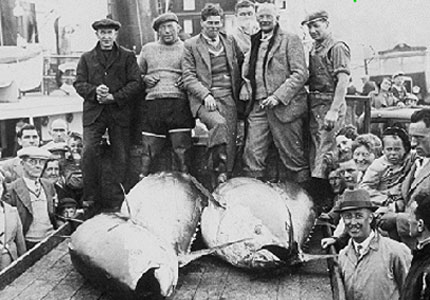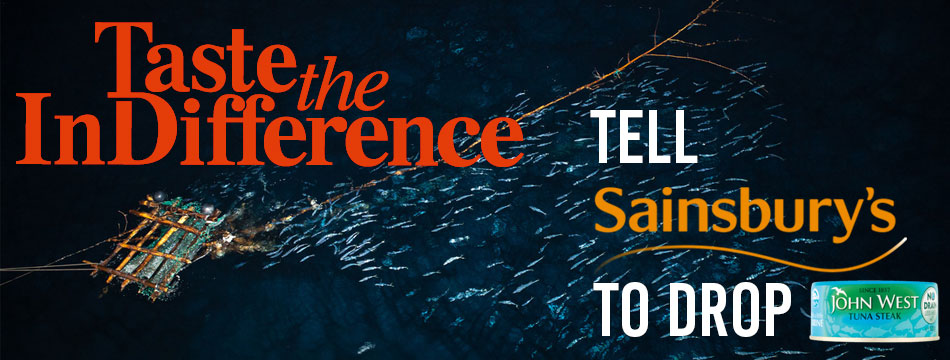
Tunny - giant blue fin tuna - caught off the Dogger Bank in 1953, when an estimated 3-4,000 were caught each year. Since then they have disappeared from the North Sea.
Gill netting
In the North Sea, gill nets are a particular problem for the harbour porpoise population. They are frequently caught in bottom-set gill nets, probably due to their feeding behaviour on or near the sea bed. Porpoises, which depend on echolocation to make sense of their surroundings, often fail to detect the thin but strong nylon fibres of gill nets and become entangled and drown. One study estimated that the annual bycatch of harbour porpoises in the Danish gill net fishery alone was around 7000 animals.
Gill nets are primarily used to target cod, hake, pollack, ling, flatfish and dogfish.
Gill nets themselves are long panels of netting that can be set at any depth in the sea – some are set just below the surface of the water, others on the sea bed. Their length varies enormously – the smallest around 70m long, the largest several kilometres. The size of the holes in the net determines the size of the fish that can be caught. Gill nets are a danger to ocean life because they cannot be used to catch targeted species. This makes them a threat to a diverse range of sea life that can become entangled in the nets.
It should be noted that many of the negative aspects to gill netting can be mitigated against. Measures such as ensuring a larger mesh size that allows smaller fish to escape, fitting noise devices that keep dolphins away from the nets, and choosing areas to fish where vulnerable species are not often found will all help stop animals like dolphins and seabirds from being caught in the net. In addition to this, fishermen should be properly recording everything they catch – including dolphins and porpoises – which help us understand whether or not they are fishing in a sustainable way; there are certainly some gill-netters out there doing the right thing.
Industrial Fishing
Industrial fishing targets small fish species for conversion to fishmeal and fish oil as opposed to direct human consumption, pose another major threat to the North Sea. The main target species are sandeels, Norway pout and sprat.Sandeels are a vital link in the North Sea ecosystem. Feeding on zooplankton, they are fed on in turn by many predatory fish, seabirds, seals and cetaceans. Removing large quantities of these small fish may lead to a shortage of food for their predators, which include several commercially important fish species, such as cod and haddock.
It is difficult to determine the impacts that industrial fishing has on the ecosystem, but the breeding failure of kittiwake in Shetland in the 1980s and eastern Scotland in the 1990 was traced back in both cases to a local failure in the sandeel stock.
Both gill netting and industrial fishing would be prohibited from the marine reserves that Greenpeace is proposing.


